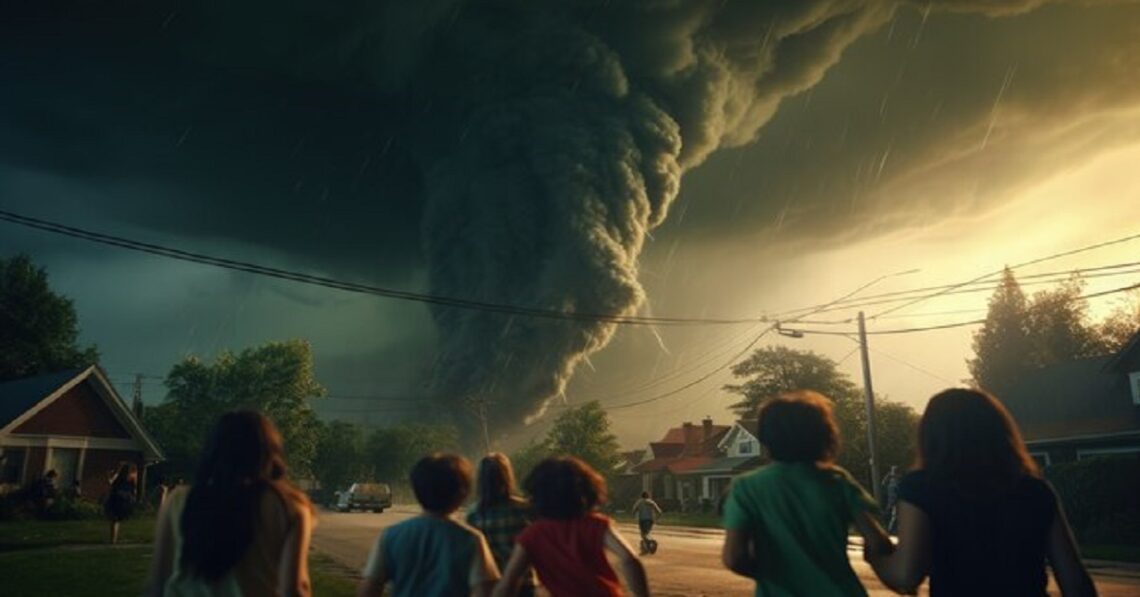Table of Contents
- What Are Hurricane Categories?
- The Science Behind Hurricane Classifications
- Real-Life Impact of Different Hurricane Categories
- Common Misconceptions About Hurricane Categories
- How Do Hurricane Categories Affect Emergency Planning?
- Remaining Prepared Regardless of the Category
- Conclusion: Beyond the Numbers
What Are Hurricane Categories?
Hurricane categories are classifications used to indicate the severity of a hurricane based on sustained wind speeds. This system helps meteorologists, emergency planners, and the general public prepare for the potential impact of these powerful storms. Understanding hurricane categories is essential for both immediate and long-term planning and preparation.
Hurricanes are categorized from 1 to 5, with Category 1 being the least severe and Category 5 being the most intense. These categorizations are more than just numbers; they offer crucial information about the expected wind speeds and potential damage. For example, a Category 1 hurricane has winds ranging from 74 to 95 mph and can cause minimal damage to buildings. In contrast, a Category 5 hurricane with wind speeds exceeding 157 mph can lead to catastrophic destruction, uprooting trees and severely damaging buildings.
The Science Behind Hurricane Classifications
The National Hurricane Center classifies hurricanes using the Saffir-Simpson Hurricane Wind Scale. This scale focuses mainly on sustained wind speeds, helping to create a standardized measure for comparing storm strengths. However, it’s important to understand the intricate science of determining these categories. Factors such as central pressure, rainfall potential, and storm surge also play significant roles in a hurricane’s destructive power. These additional elements can make even a lower-category hurricane more dangerous than anticipated.
For instance, central pressure often correlates with wind speeds. Still, it also impacts the storm surge—one of the most dangerous aspects of a hurricane. Rainfall potential, on the other hand, can lead to flooding, which is another critical concern. Understanding these factors’ interconnectedness helps create a more comprehensive approach to disaster preparedness and response.
Real-Life Impact of Different Hurricane Categories
When considering a hurricane’s potential impacts, the category number may provide a quick reference, but it hardly tells the whole story. For instance, a Category 3 hurricane can disrupt lives, causing potential evacuation, loss of property, and significant economic impact. The human toll can be extensive, affecting mental health and community cohesion long after the storm has passed.
A study by CNN Weather found that while higher-category hurricanes are rarer, they account for most recorded damages. Thus, it’s crucial to understand the full scope of what these classifications entail beyond mere wind speeds. The aftermath of these storms often involves prolonged recovery periods, financial aid for rebuilding, and psychological support for affected communities. This holistic understanding aids in better preparedness and more effective response strategies.
Common Misconceptions About Hurricane Categories
People often think lower-category hurricanes don’t pose significant threats or that higher categories always equate to more dangerous situations. These misconceptions can lead to inadequate preparation or unnecessary panic, which can have serious consequences.
Lower Category Hurricanes are Harmless
Many people underestimate the potential damage of lower-category hurricanes. These storms can still cause flooding, power outages, and property damage. It’s essential to take every hurricane seriously, regardless of its category. Even a Category 1 hurricane can lead to downed power lines, making it difficult for emergency services to respond promptly. Additionally, these storms can cause minor flooding that, over time, can lead to significant structural damage to homes and businesses.
Higher Categories Always Mean More Danger
While higher-category hurricanes generally bring stronger winds and more severe storm surges, other factors like the storm’s size, speed, and interaction with other weather systems can also influence its overall impact. For example, a slow-moving Category 2 hurricane can dump immense rain over a localized area, causing severe flooding. On the other hand, a fast-moving Category 5 might have less time to cause similar rain-induced damage, even though its winds are much stronger.
Preparation is essential for all hurricanes, regardless of their category. Understanding these categories’ limitations and predictive power helps make well-informed decisions during the hurricane season.
How Do Hurricane Categories Affect Emergency Planning?
Emergency planners use hurricane categories as a part of a broader strategy to prepare for and mitigate the effects of these natural disasters. The category can influence evacuation orders, resource allocation, and public communication campaigns. For instance, the community’s response to a Category 3 hurricane would differ significantly from that to a Category 1 storm.
For example, a Category 4 hurricane might prompt mandatory evacuations in coastal areas. In contrast, a Category 1 storm might only require residents to secure outdoor items and be prepared for potential power outages. The decision-making processes involve detailed analysis and various scenarios, considering not just the wind speeds but also the storm’s projected path, potential rainfall, and storm surge.
Remaining Prepared Regardless of the Category
It’s vital to be prepared for hurricanes of any category. This includes having an emergency kit, creating a family communication plan, and understanding the particular risks associated with your region. An emergency kit should include essentials like water, non-perishable food, medications, flashlights, and batteries.
Remember, even a lower-category hurricane can cause substantial damage if unprepared. A well-thought-out plan can distinguish between a safe evacuation and a chaotic, dangerous situation. Regularly revising your emergency plan and updating your emergency kit ensures you’ll be ready when the time comes.
Conclusion: Beyond the Numbers
While hurricane categories offer a useful way to gauge potential severity, they are just one piece of the puzzle. Comprehensive understanding and preparedness are crucial to mitigating risks and safeguarding lives and property. Always stay informed and take all necessary precautions, regardless of the hurricane category. By focusing on a holistic approach to hurricane preparedness, individuals and communities can better withstand the challenges posed by these formidable natural phenomena.





